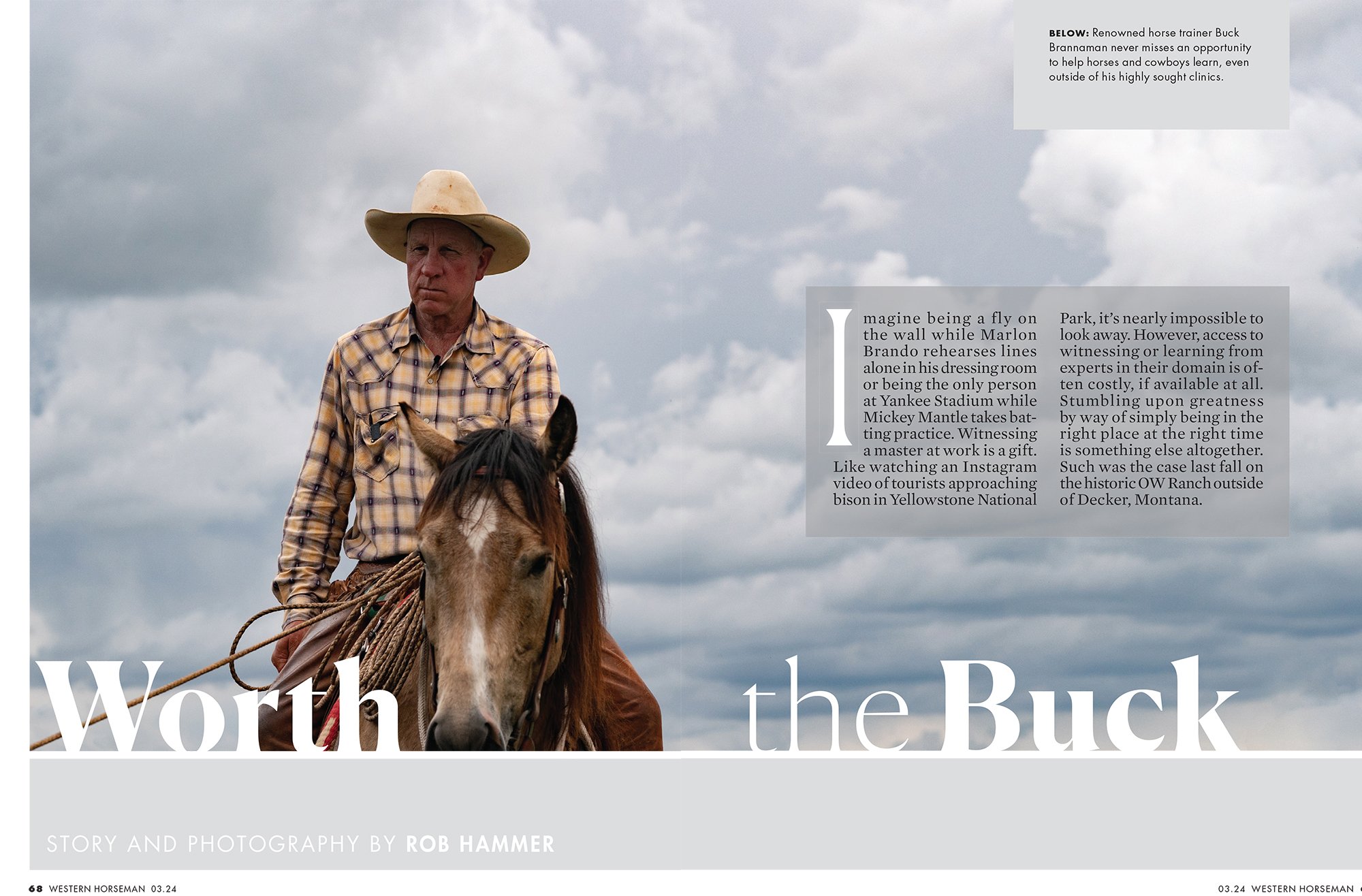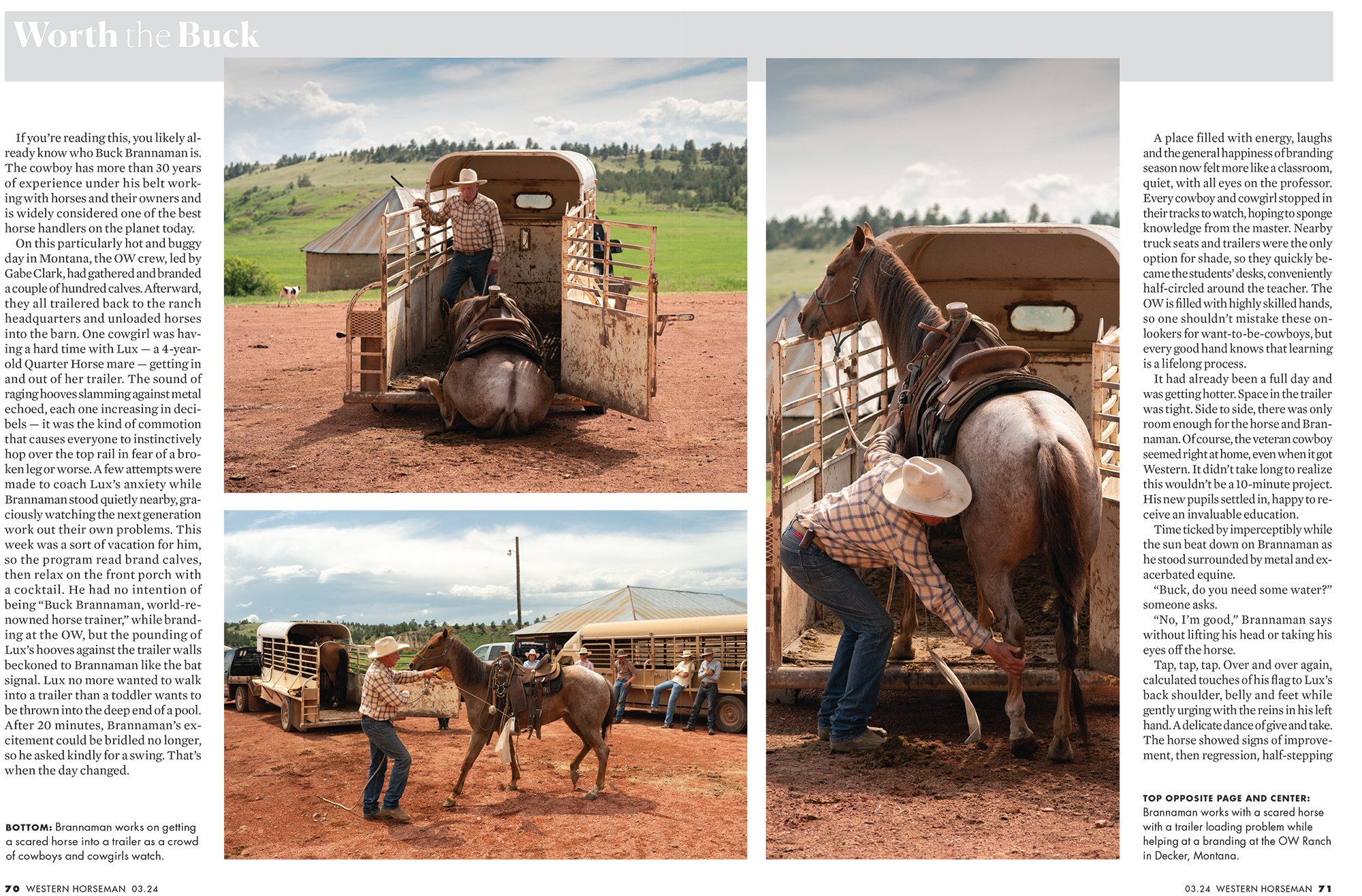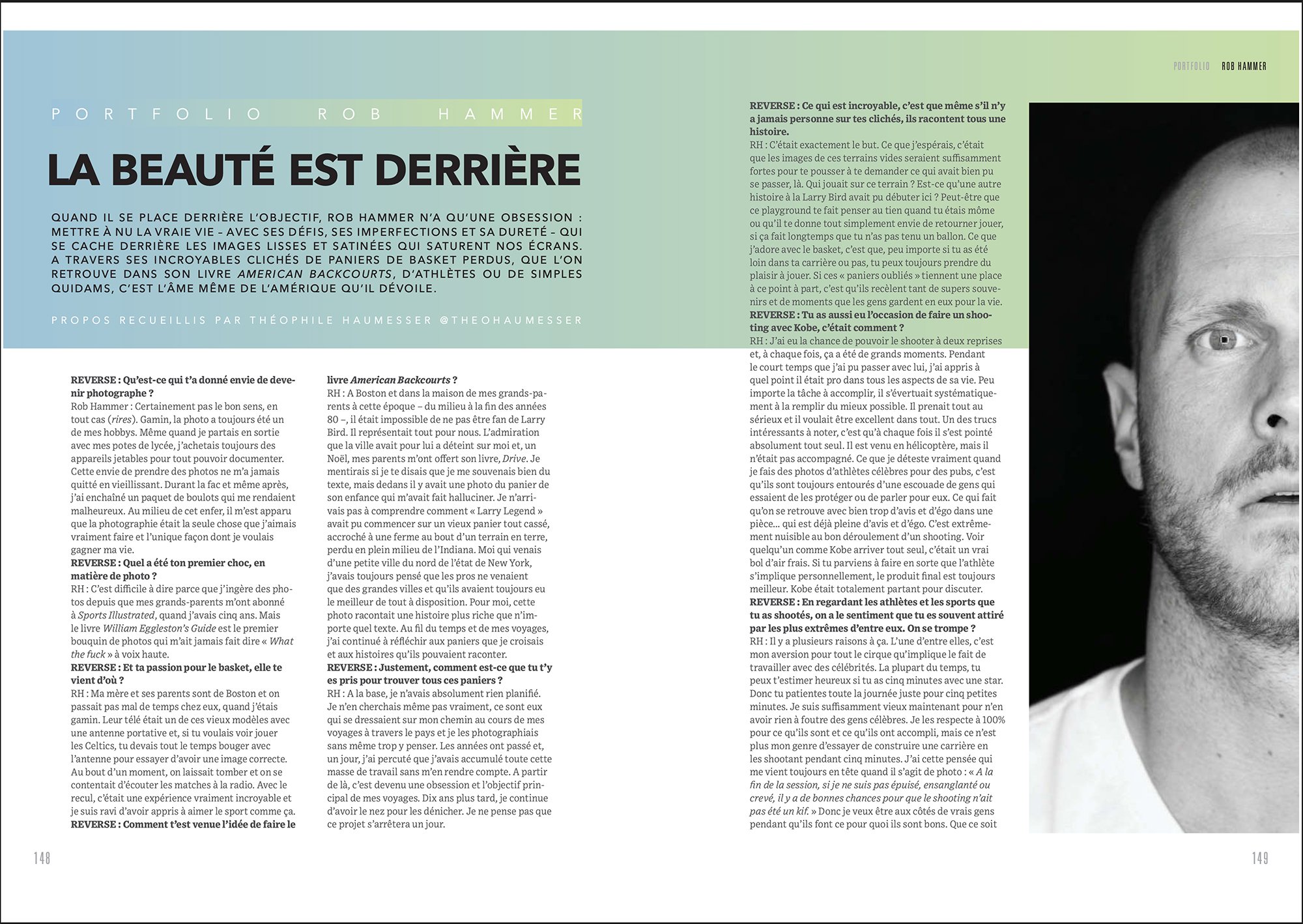Buck Brannaman - Horse Trainer
Imagine being a fly on the wall while Marlon Brando rehearses lines alone in his dressing room. Or being the only person at Yankee Stadium while Mickey Mantle takes batting practice. Witnessing a master at work is a gift. Like watching an IG video of tourists approaching Bison in Yellowstone, it’s nearly impossible to look away. However, access to such events isn’t often granted and requires some form of payment. That might be putting in your time with sweat equity, or the purchase of an elusive ticket that seems to vanish the second it hits the internet. Stumbling upon greatness by way of simply being in the right place/right time, is something else all together. Such was the case last fall in Montana on the historic OW Ranch outside of Decker.
Buck Brannaman - Western Horseman Magazine
If you’re reading this, then you know who Buck Brannaman is, so that’ll save us some time. On this particular hot and buggy day, the OW crew led by Gabe Clark, had gathered and branded a couple hundred calves. Afterward they all trailered back to HQ and unloaded horses into the barn. One cowgirl was having a hard time with Lux - a 4 year old Quarter Horse Mare, getting in and out of her trailer. You’re familiar with the sound of raging hooves slamming against metal, each one increasing in decibels. The kind of commotion that causes everyone to instinctively hop over the top rail in fear of a broken leg, or worse. A few attempts were made to coach Lux’s anxiety, while Brannaman stood quietly nearby, graciously watching the next generation work out their own problems. But that horse no more wanted to walk into a trailer than a toddler wants to be thrown into the deep end of a pool. After twenty minutes his excitement could be bridled no longer, so he asked kindly for a swing. That’s when the day changed. A place filled with energy, laughs, and the general happiness of branding season, now felt more like a classroom with all eyes on the professor. Every cowboy/girl stopped in their tracks to watch, hoping to sponge knowledge from the master. Nearby truck seats and trailers were the only option for shade, so they quickly became the students desks, conveniently half circled around the teacher. And for clarification, the OW is filled with highly skilled hands. So the onlookers weren’t just a bunch of wanna be’s, but every good cowboy knows that learning is a lifelong process.
Famous Horse Trainer - Buck Brannaman
It had already been a full day and getting hotter. Brannaman wasn’t planning on being Brannaman right then. This week was sort of a vacation for him, so the program read brand calves then relax on the front porch with a cocktail, but he simply couldn’t help himself. Did Michael Jordan ever turn down a challenge? No, he seeked them out. Space in the trailer was tight. Side to side there was only room enough for the horse and Buck, but of course he seemed right at home. Even when it got Western. It didn’t take long to realize this wouldn’t be a 10 minute project, so the students settled in, happy to receive an invaluable education. Time ticked by imperceptibly while the sun beat down on Brannanam as he stood surrounded by metal and exacerbated equine. “Buck, do you need some water?” “No, I’m good”, he’d say without lifting his head or taking eyes off the horse. Tap Tap Tap. Over and over again, calculated touches of his flag to Lux’s back shoulder, belly, and feet while gently urging with the reins in his left hand. A delicate dance of give and take. The horse showed signs of improvement then regression, half stepping it’s back legs like it was being pushed off the edge of a cliff, genuinely afraid.Once inside he slammed his head repeatedly on the roof, then dropped right to the ground, rattling the entire trailer. After an hour some of the hands begrudgingly left only out of obligation to set up a trap for the next day's branding. Everyone else took no notice because their eyes were glued on the “action”. At one point Buck said in his own calm way that these types of exercises are crowd thinners because most people lack the longevity to deal with such subtle wins. Which makes you realize that patience is the conduit to his greatness. Lux wasn’t even his horse. Nor was he leading one of his world famous clinics, but you get the sense that his obligation to the animals and desire to help trumps all that. Another 30 minutes went by with small gains and bigger losses. Still though, there was no wavering from Brannaman. He was there to complete the task. The only sounds heard were the flickering of the flag until the slightest bit of progress was made, which he recognized verbally but didn’t celebrate. Another 30 minutes passed. Two hours into an impromptu session and you had to wonder where he’d draw the line and start thinking about a cold whisky. When asked what to do if he felt the horse was out of patience, he stated that horses are much more patient than humans. And if your horse isn’t listening, then you probably don’t have anything interesting to say!
Buck Brannaman working with a young horse on the OW Ranch in Montana
Buck Brannaman training a horse
A half hour and several hundred taps of the flag later, the guys came back from setting up the traps and Buck was still at work in the same 10 ft bubble as when they left. The only thing that had changed was the horse. After several thousand taps of the flag, he could almost seamlessly walk in and out of the trailer. His calm and confidence now mirroring Brannamans because they developed a mutual trust. After a few more taps, Buck said quietly “that’s the one”. Sure enough, he had successfully taken Lux from being an outright liability to a gentle collaborator. Any anxiety and hesitation had been erased. All this on a day when he simply wanted to throw some loops in good company and soak up a Montana sunset. Most people might have given Lux the old college try if anything at all. Buck spent 2.5 hours because that’s what he was born to do. Saying no or walking away wasn’t an option. And for those lucky enough to bear witness, they received the gift of a lifetime. Afterward his daughter Reata joked “you might have a future in this, Dad.” To which he calmly replied, “I don’t know, it’s kinda competitive”
Photograph of Buck Brannaman on the OW Ranch in Montana
Contact me directly with all cowboy print inquiries for your home, office, or commercial space - rob@robhammerphotography.com












